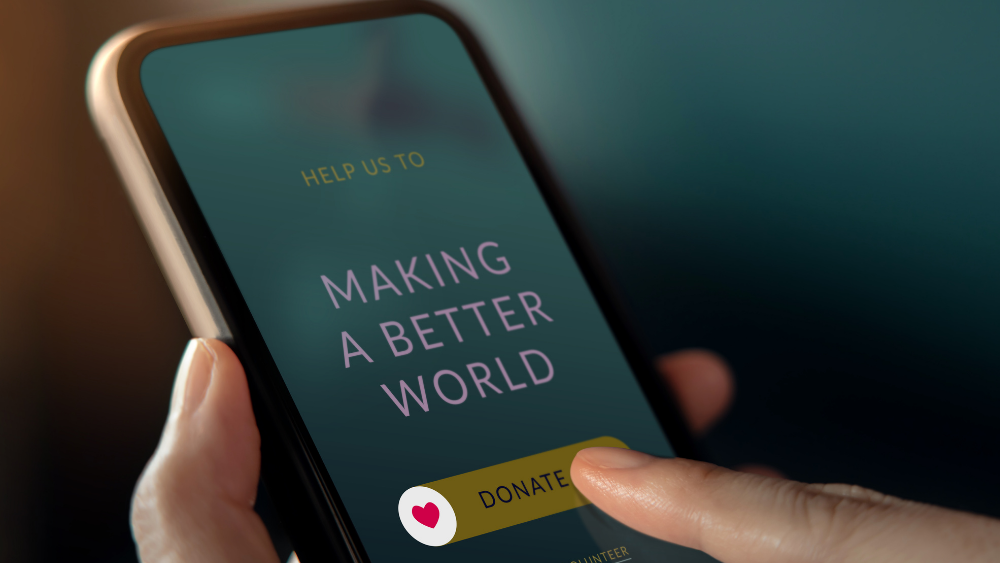Insights
INSIGHTS
All Topics
How has donor behaviour changed since COVID-19?
20 Apr 2021by Christine Chiu
We look at donation trends since the emergence of the pandemic and consider the future consequences
The pandemic hasn’t left anyone or any organisation untouched. Throughout the past 18 months, the increasing prevalence of digital tools has changed the way supporters interact with charities.
We’re taking a look at some of the new ways donors and volunteers support their charity causes. First, it’s important to highlight that donors have not stopped giving. As Anna Josse, chief executive of the donation management charity Prism the Gift Fund, has said: “I have seen many major donors continue the giving they had already committed to, and some who have increased giving to include emergency COVID-19 donations.”
But due to the pandemic, new trends in giving are now emerging, which we will explore below.
Donors are getting younger and Gen Z is leading the charge
Those who are giving are changing. According to Enthuse, people belonging to the Gen Z are donating more and have plans to keep doing so. The research shows that 84% of the Gen Z generation donated during the pandemic and half of them say they will continue to give.
Enthuse also reported that, as part of their own data set, the Gen Z donor group increased 700% during the pandemic.
All this bodes very well for future donations.
Gen Z members engage online when it comes to giving. To attract them as your target audience, you need to prioritise mobile. In fact, for younger donors, mobile phone and social media are the best ways to reach their wallets.
According to research by Blackbaud, 92% of Millennials and Gen Z are willing to give via mobile versus only 44% of Baby Boomers. For charities targeting these audiences, social media and mobile phone accessible information goes a long way. To sew up donations, make sure that you’ve got the right payment options, including debit and credit card methods.
Donors want to give to specific causes
Giving is becoming less general. Digital Reason reveals how donors are thinking about charitable causes. In a survey of 2,000 people representative of the UK, the results show that nearly 60% of donations made were to combat the effects of COVID-19.
Third Sector sums up how donors feel. “Now at the start of 2021, more individuals than ever want to do worthwhile things for society and increasing volumes of people want to help fund these important causes,” says the magazine.
Taken to heart, charities need to go online and communicate to audiences what the cause is. Whether it’s dedicated help for COVID-19 victims or business as usual, charities can use tech to improve trust and transparency in terms of where funds are going.
Trust in charities has increased
Throughout the pandemic, charities have done so much to improve trust in the sector. The Edelman Trust Barometer, a measure of trust in institutions shows that the UK public has a lot of confidence the non-profit sector.
Donors, as part of the public, have increased trust in charities and their missions. When people were asked whether they trust charities, 54% responded positively, which represents an increase of 6% from the last survey.
For those charity digital leaders looking to improve authenticity, trust, and transparency, digital tools come in handy. Supporters are going online more than ever to digest charity content.
Virtual events can help tie messages together. At Charity Digital, we recommend making sure that your digital event links back to your cause.
Charities can also raise trust by tailoring content to reflect impact. Exemplary charities have used virtual and augmented reality and immersive storytelling to show impact. Successful story-tellers includes Smile Train, an international charity focusing on cleft palate surgery for children.
Smile Train’s immersive video takes potential donors through the emotional journey of each child. The videos make a case for the surgeries, showing how cleft palate malformations affect eating, drinking and speaking.
By showing real-life beneficiaries online, the charity has done a lot to improve trust by showing where funds are going. The take home message is that evidence grows trust.
Supporters are helping in different ways
Volunteers are also engaging in different ways. Volunteerism has not only gone online, but is aligned with supporting Covid-19 efforts. Online matching services like beonhand helps ease the burden of coping with the pandemic.
Charity volunteers are also going online to deliver services. They have made a big difference for charities like the Bookmark, which has volunteers dedicating time to read to underprivileged children.
Think NPC says volunteers are organising in non-traditional ways. Local mutual aid groups have emerged online, connecting those who are isolating with helpers. The helpers collect groceries and medicines for those less able to.
For many charities, going online is a way to attract more volunteers while keeping safe.
Christine Chiu
More on this topic
Recommended Products
15 Jan 2025by Laura Stanley
How to revisit your charity’s story in 2025Sponsored Article
15 Jan 2025by kirsty marrins
AI and the future of service delivery
Our Events
Charity Digital Academy
Our courses aim, in just three hours, to enhance soft skills and hard skills, boost your knowledge of finance and artificial intelligence, and supercharge your digital capabilities. Check out some of the incredible options by clicking here.




















